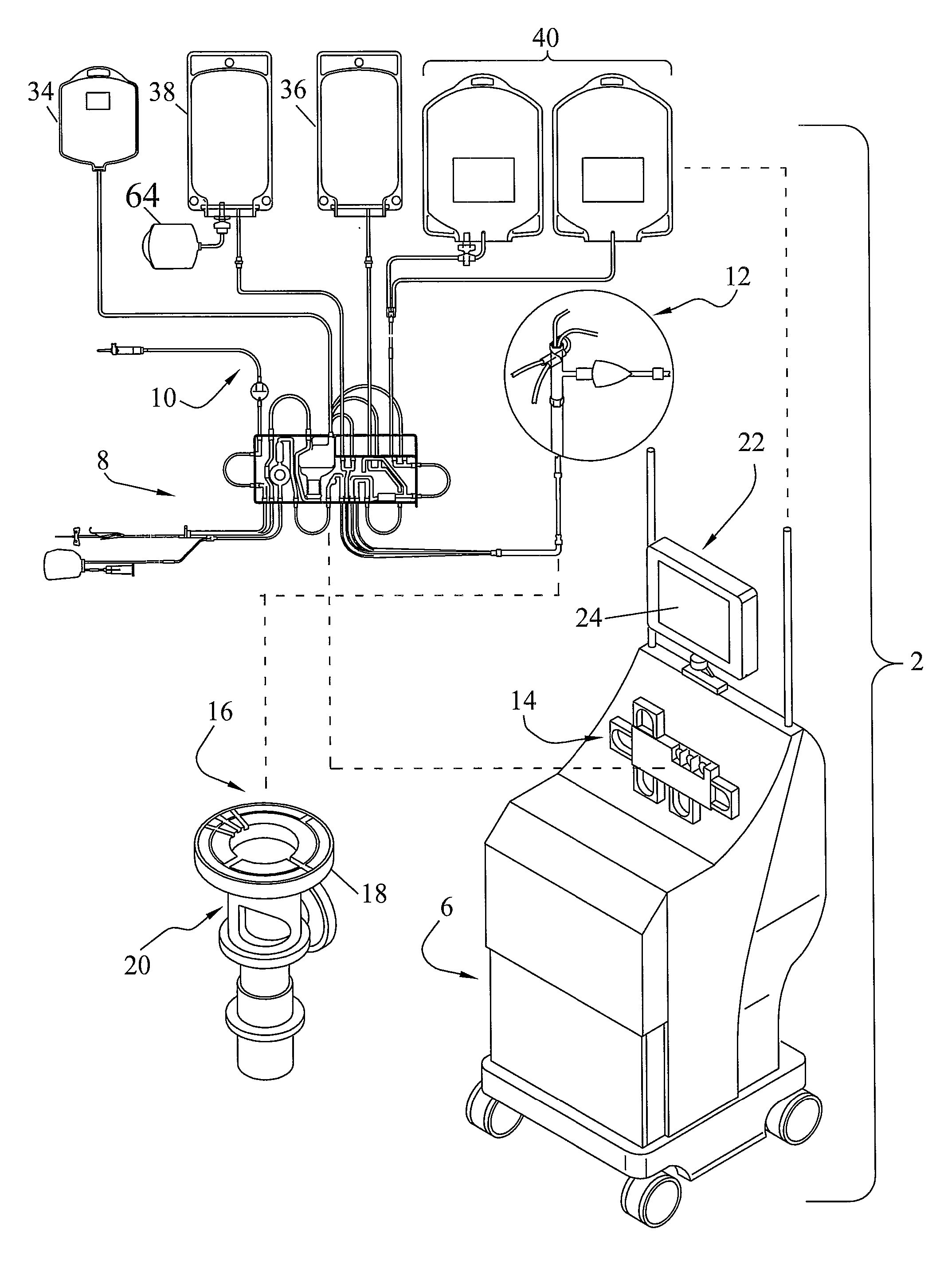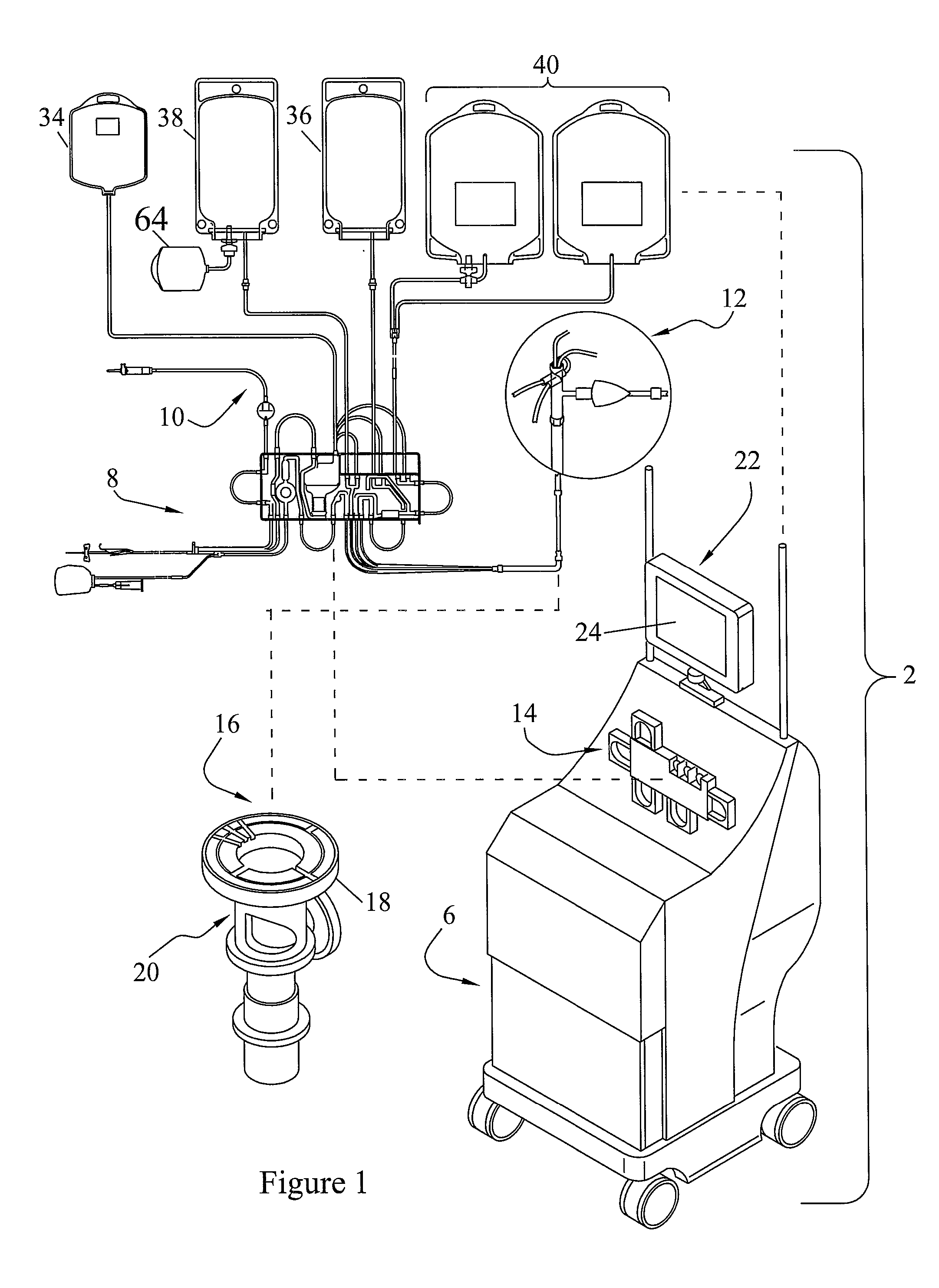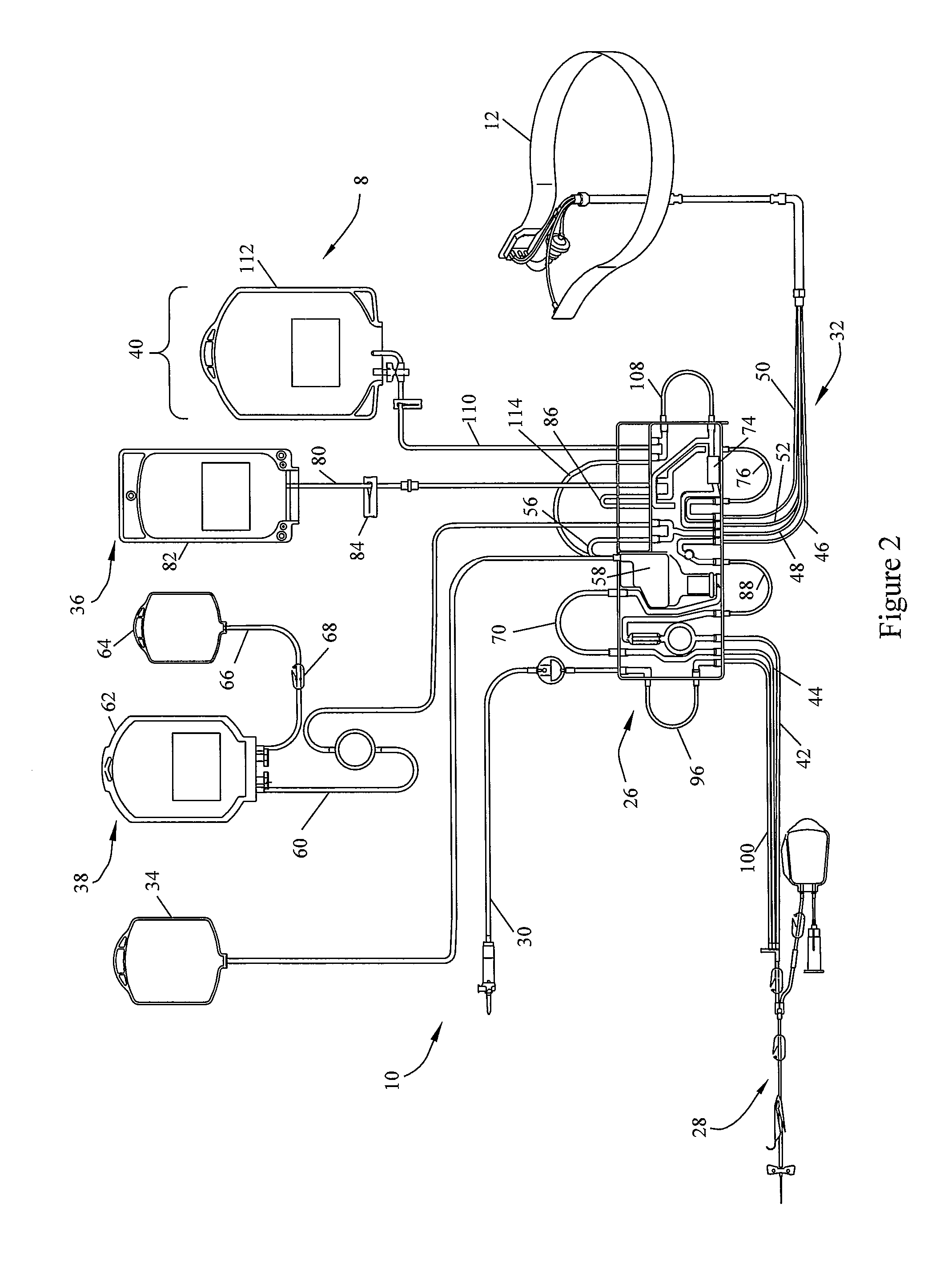Methods and Apparatus for Hemolysis Detection in Centrifugal Blood Separator
a centrifugal blood separator and centrifugal technology, applied in centrifuges, other blood circulation devices, separation processes, etc., can solve problems such as spillover and hemolysis, and achieve the effect of high confiden
- Summary
- Abstract
- Description
- Claims
- Application Information
AI Technical Summary
Benefits of technology
Problems solved by technology
Method used
Image
Examples
Embodiment Construction
[0018]The present invention will be described in relation to the accompanying drawings. Generally, the present invention relates to improvements for a blood processing aphaeresis system.
[0019]A preferred blood aphaeresis system 2 for use in and / or with the present invention is schematically illustrated in FIG. 1. System 2 preferably provides for a continuous blood component separation process. Generally, whole blood is withdrawn from a donor and is substantially continuously provided to a blood component separation device 6 where the blood is continuously separated into various component types and at least one of these blood component types is collected from the device 6. One or more of the separated blood components may then either be provided for collection and subsequent use by another through transfusion or may be uncollected and then returned to the donor. Therapeutic treatment and near immediate return of certain separated blood components is a viable, yet less common alternat...
PUM
| Property | Measurement | Unit |
|---|---|---|
| Ratio | aaaaa | aaaaa |
Abstract
Description
Claims
Application Information
 Login to View More
Login to View More - R&D
- Intellectual Property
- Life Sciences
- Materials
- Tech Scout
- Unparalleled Data Quality
- Higher Quality Content
- 60% Fewer Hallucinations
Browse by: Latest US Patents, China's latest patents, Technical Efficacy Thesaurus, Application Domain, Technology Topic, Popular Technical Reports.
© 2025 PatSnap. All rights reserved.Legal|Privacy policy|Modern Slavery Act Transparency Statement|Sitemap|About US| Contact US: help@patsnap.com



